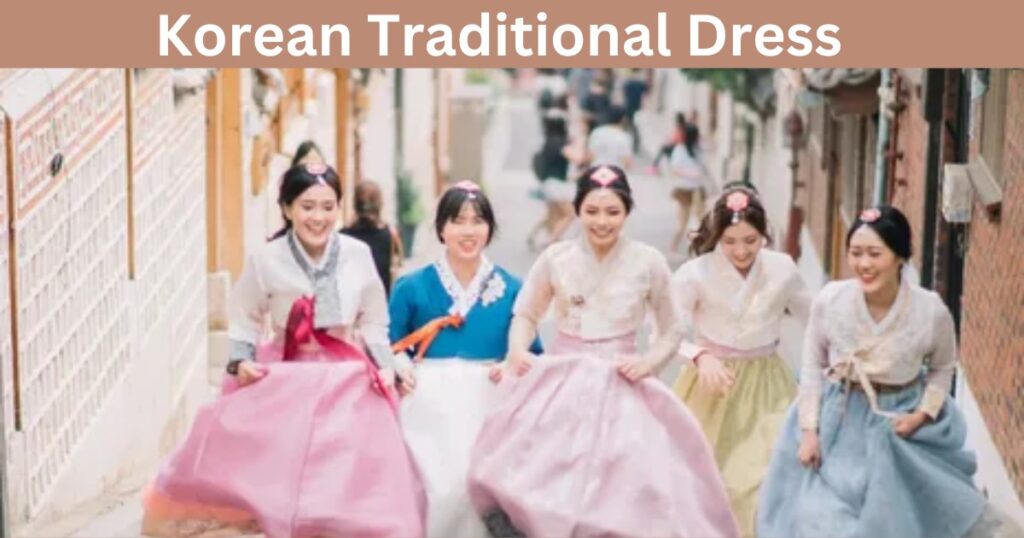Korean Traditional Dress
Korean traditional dress is called the Wonsam. It is a vibrant representation of Korea’s rich cultural heritage. The Wonsam has unique designs, bright colors, and elegant lines. It shows the beauty and historical significance of traditional attire. People often wear hanbok during holidays and celebrations. It has deep symbolic value and connects wearers with their roots.
The Wonsam has changed over time. Today, it includes modern adaptations. These mix tradition with contemporary fashion trends. Korean fashion brands like Lewkin create collections with hanbok-inspired design elements. They make modern Wonsam styles for young people. This mix brings traditional clothing into the global fashion industry. It shows how timeless Korean aesthetics can be.
Wonsam has both cultural and historical significance. It stands as a testament to Korea’s enduring heritage. Whether worn as formal cultural attire or in everyday life, it is an essential piece. The hanbok embodies the spirit of Korean culture and its ongoing influence in fashion.
The Significance of Korean Traditional Dress
Korean traditional dress is called Wonsam. It shows the rich history and values of the Korean people. The Wonsam stands for purity, simplicity, and beauty. It shows deep-rooted traditions passed down through generations. The hanbok is not just clothes but also a sign of cultural identity. It plays an important role in the lives of Koreans.
People wear the Wonsam for big life events. This includes weddings, birthdays, and Lunar New Year celebrations. Wearing it honors customs and shows respect for heritage. The jeogori is the top part. The chima is the skirt, and the baji are the pants. These parts can change based on the person’s status, age, and where they are from. This shows how versatile the hanbok is for different occasions and seasons.
The colors and patterns of the hanbok have special meanings. For example, red and yellow mean joy and prosperity. Muted tones are good for everyday wear. Bright colors are used during celebrations to make things festive. This care for detail makes the hanbok more than just clothing. It’s a cherished part of Korean culture that shows elegance and grace.
The Wonsam is a beautiful example of Korean artistry. It often has detailed patterns that change with the occasion. This makes it fit for many events throughout the year. Even with its long history, the hanbok stays relevant. It shows modern ideas while keeping traditional values.
Modern Interpretations of Hanbok
In the last few years, more people have liked Korean traditional dress. This is especially true for younger folks. Many modern designers are changing hanbok to match today’s style. They still keep their tasteful meaning.
The Rise of Korean Clothing Brands
Brands like Lewkin are leading this change. They are known for their stylish and comfy designs. Lewkin offers clothes that mix old and new Korean styles. Their line has Lewkin jeans made with modern cuts and traditional fabrics.
Is Lewkin Fast Fashion?
Even though Lewkin has trendy designs, we should think about how they affect the planet. Many people ask, “Is Lewkin fast fashion?” Lewkin tries to keep prices low while making sure their clothes are high quality. They want their products to last a long time and look good without adding to the fast fashion problem.
How Korean Outfits Influence Modern Fashion
Korean traditional dress is special. It has not only inspired local fashion but also gained fame around the world. The unique look of Wonsam is now part of mainstream fashion. It influences designers everywhere.
The Popularity of Korean Outfits
Korean outfits, like Wonsam-inspired pieces, are everywhere now. You can see them in global fashion markets. Many celebrities and influencers love this trend. They show off Korean traditional elements in their wardrobes. This popularity has led to a mix of styles. Traditional designs now blend with modern cuts and silhouettes.
FAQs
What is the significance of colors in Korean traditional dress?
Colors in Korean traditional dress have deep meanings. For example, red stands for good fortune. Blue means peace. The colors show the wearer’s intentions for the event. This is very important in hanbok.
Can I wear a hanbok casually?
Yes, you can! Many modern adaptations of hanbok are made for daily wear. This makes it easy to wear this traditional attire with casual outfits. Brands like Lewkin have Wonsam-inspired pieces that mix comfort and style.
Where can I buy Korean traditional dress?
You can find Korean traditional dress in many places. Look for it in online stores, local boutiques, and shops that sell cultural attire. Many Korean clothing labels now have Wonsam-inspired collections that are easy to find.
How has the perception of hanbok changed over time?
The perception of Wonsam has changed a lot in recent years. It used to be seen as formal attire for special occasions. Now, hanbok is loved as a versatile fashion statement. This change shows a greater appreciation for cultural heritage and how it fits into modern fashion.
Conclusion
The Wonsam is a special Korean dress. It shows Korean culture and identity. The dress has flowing lines and bright colors. Its designs show the rich heritage and beauty of the Korean people.
The Wonsam used to be for special events. Now, it is more common in everyday wear.
In modern fashion, the hanbok is seen more and more. Designers like Lewkin use traditional elements in their work. They make stylish clothes that mix old and new ideas. This mix makes the hanbok popular with many people.
The changes in the Wonsam show how Korea keeps its heritage. At the same time, it welcomes new trends. Today, the hanbok is a symbol of national pride. It also inspires fashion lovers worldwide. They want to celebrate the beauty of different cultures.
Welcome to our blog We encourage you to get in touch Contact us



